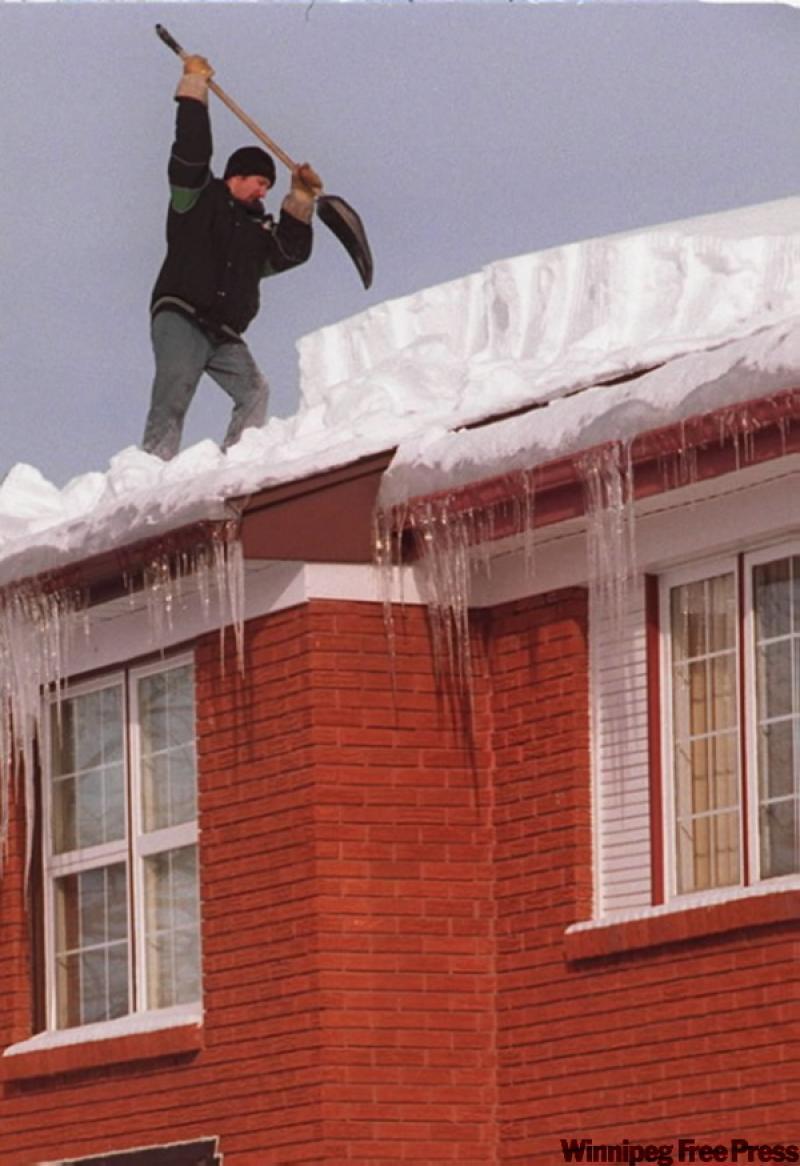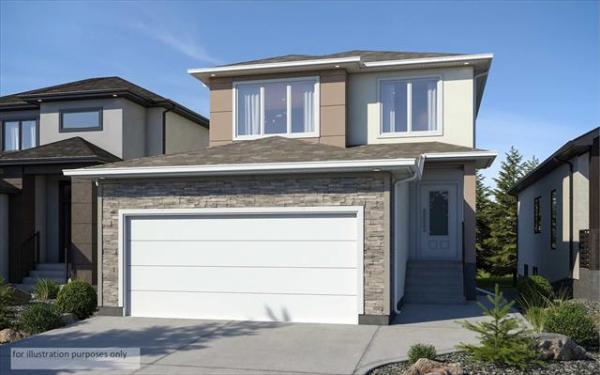
QUESTION: We have a split-level home in Winnipeg. Last winter, there was an extreme accumulation of snow on the north side where the gable of the living room meets the vertical section of the house that accommodates the upstairs bedrooms. When the snow began to melt, it filled the eavestrough and froze. Then, as melting began again, there was constant overflowing and dripping onto the front entryway platform, forming about an inch of ice.
We are considering installing an electrical heating cord the whole length of the eavestrough and down the drainpipe, and also a second heating cord in a zig-zag fashion along the length of the roof, extending about 18 inches or so from the edge.
I do believe the problem could be lessened if we were to get up on the roof and shovel off much of the snow, in addition to electrical cords that we'd turn on during the melting season. One handyman said the zig-zag cord would adversely affect the shingles, while another said it wouldn't.
What would you advise us to do to solve this problem of having icy steps, without having the concern about damaging the shingles? I imagine this is a question others would be interested in having answered too. We surely would appreciate your good advice.
Keith & Ruby MacDonald, Winnipeg
ANSWER: This should be the perfect time of year to address your excellent question, as the snow has not yet accumulated on your roof and you still will have time to remove the cables, if you have already installed them. If you are like many homeowners, have procrastinated and are leaving the installation until the last minute, you may be able to return this poorly conceived item to the place you bought them.
Electric heating cables meant to install on roofs are not a good idea and should only be used as a last resort on very steep pitched roofs. These items fall into the category of "quick-fix" products that have little benefit and can do more harm than good.
My personal favourite item of this type is the little square box with a damper than is designed to install on dryer vents to redirect the dryer heat back into the home during the heating season. While it appears to be an environmentally friendly product designed to reduce heat loss from the dryer, it is grossly ill-conceived. The reason dryers vent to the exterior is not to remove excess heat, but to remove excessive moisture that is produced by drying wet clothes. This moisture should not be pumped into the basement or home, as it can lead to excessive condensation and mould growth. The energy saved by redirecting the dryer-vent products back into the home may lead to major problems -- but I digress.
Heat-trace cables installed on roofs are supposed to melt excessive ice buildup at the eaves and help prevent the problems you have experienced. While this is good in theory, it rarely works as planned.
The problem last winter, and other years with heavy snow cover and frequent freeze/thaw cycles, is a heavy accumulation of snow on the roof. The underside of this snow can melt during the daytime, and will run underneath the majority of the snow pack until it hits the eaves. If the troughs are completely filled with ice, as they likely will be in the middle of winter, this water will either overflow and cause icicles or accumulate above the ice in the troughs and create ice dams as the eaves cool when the sun goes down.
Unfortunately, the heating cables you are wondering about are thin wires covered with plastic sheathing and have very limited coverage. They may be somewhat effective at melting the ice buildup at the eaves, but only directly around the cables. They will not melt the entire ice dam and do little to help, even when they are run through the entire eavestrough and downspout.
While I am not in favour of items like heating cables that provide a band-aid type solution to a gaping wound, the real issue is the damage they can do to your roof. Your "handyman" is absolutely correct that heating the roof, especially if it is composed of asphalt shingles, will drastically reduce its life expectancy and cause isolated deterioration where the wires are installed. You will find evidence of this deterioration, often after only a single season of use, with curling of the edges of the shingles in this area. If the winter heating is allowed to continue for several years, the shingles will wear out in no time and need to be replaced.
As with many ill-conceived and poorly designed quick-fix items for common home problems, heat-trace cables for roofs are a bad idea. The real fix is to investigate the root source of the problem and attempt to eliminate the cause, rather than treat the symptom.
The cause of many ice-damming problems is improper insulation and ventilation in attics or, in your case, a difficult roof design that leads to heavy accumulations of snow in isolated areas. You hit the nail right on the head when you said removal of heavy snow accumulation in the problem area will help. If there is not excessive snow in that spot there will not be excessive ice buildup.
It's far wiser to spend a few bucks to hire someone to clear the snow from this area a couple of times each winter than to throw the money away on heating cables and electricity that will do little more than damage your roof.
Ari Marantz is the owner of Trained Eye Home Inspection Ltd. and the President of the Canadian Association of Home & Property Inspectors - Manitoba (www.cahpi.mb.ca). Questions can be emailed to the address below. Ari can be reached at (204) 291-5358 or check out his website at www.trainedeye.ca.
trainedeye@iname.com



